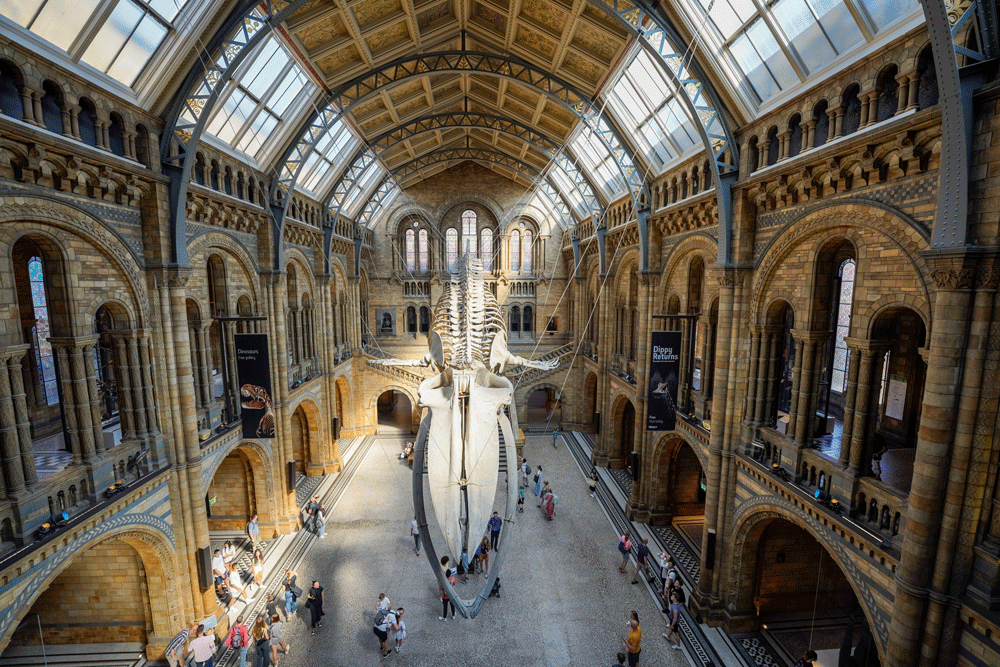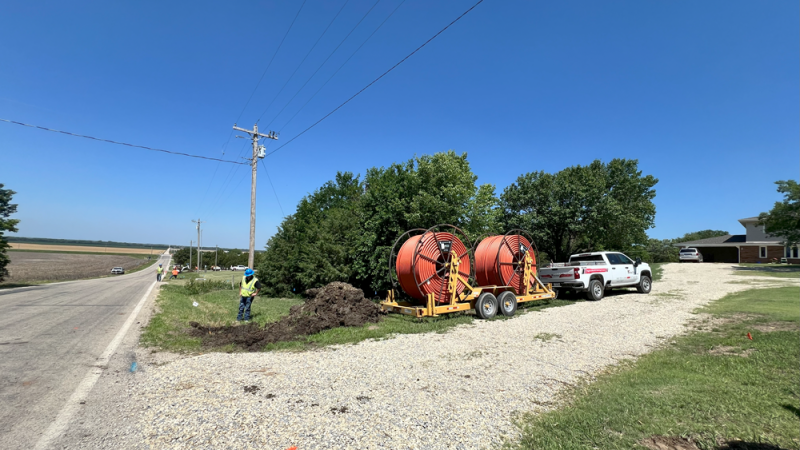It is not very often that something genuinely needs no introduction, but everybody knows about the Natural History Museum. It is not only one of the most-visited natural history museums in Europe, but is also a world-leading centre for the increasingly urgent and relevant scientific research needed today.
“With a vision of a future in which both people and the planet thrive, it is uniquely positioned to be a powerful champion for balancing humanity’s needs with those of the natural world,” says Tim Littlewood, Executive Director of Science for the Natural History Museum. “It is the custodian of one of the world’s most important scientific collections comprising over 80 million specimens. The scale of this collection enables researchers from all over the world to document how species have and continue to respond to environmental changes – which is vital in helping predict what might happen in the future and informing future policies and plans to help the planet.”
The Natural History Museum is known worldwide as one of the world’s largest and most important natural history collections, displayed to the public at museums in South Kensington and Tring. Its collection contains specimens from around the world, including the tiniest insects and the largest dinosaurs, from a period of 4.6 billion years of Earth’s history.
But the museum itself is something of a priceless artefact. It first opened its doors on the 18th of April 1881, but it was established in 1753 when the high society physician and collector, Sir Hans Sloane, bequeathed his collection of specimens and cultural artefacts to Parliament for £20,000 – significantly below its estimated value. The government bought Sloane’s collection and then went on to build the British Museum to display it to the public.

A Planetary Advocate
With enormous global reach and influence, the Natural History Museum’s mission is to inform, inspire and empower people to become advocates for the planet.
“It’s a challenge we’re all facing – the planetary emergency,” Littlewood says. “Climate change, biodiversity loss, habitat destruction, pollution, emerging diseases and deforestation are just some of the crises caused by unsustainable human activity. These add up to an emergency on a planetary scale.”
In the face of that emergency, the Natural History Museum aims to be a catalyst for change, engaging advocates for the planet in everything it does. The museum’s 370 scientists are all working hard to find solutions to the planetary emergency in every aspect of life. These scientists make use of the museum’s collections to conduct leading world-class research on every facet of the natural world.
As Littlewood says, “Their science is contributing critical data to help the global challenges to secure the future of the planet from the major threats of climate change and biodiversity loss through to finding solutions such as the sustainable extraction of natural resources.”
But those scientists are only part of the Natural History Museum’s contingent of over 1,000 dedicated staff members working to share its strategy and vision with the public. They do this through a range of roles, from welcoming visitors through its doors, to looking after its estate, to designing exhibitions and caring for its collections.
Unlocking History
The museum’s collection is a valuable resource in itself, representing a unique global heritage acquired from places and time periods that cannot be resampled.
“The collection is an irreplaceable resource for understanding a rapidly changing planet,” Littlewood says.
However, currently much of that collection is distributed across unsuitable sites and conditions in London. This is why the “NHM Unlocked” project will move one-third of this collection, consisting of 28 million specimens, to the Thames Valley Science Park (TVSP).
 The NHM Unlocked programme is a critical part of the museum’s efforts to enhance its research capabilities.
The NHM Unlocked programme is a critical part of the museum’s efforts to enhance its research capabilities.
“This is generously enabled through a substantial £201 million investment from the UK Government as part of its priority to increase investment in science, research and development,” Littlewood shares.
Natural History Museum Unlocked is a programme to build a state-of-the-art collections and research centre at Thames Valley Science Park (TVSP) in Reading, providing space equivalent to three football pitches.
“Historical collections will be seamlessly integrated with digitisation and imaging suites, cutting-edge molecular and analytical laboratories, and a biobank,” Littlewood explains. “The new centre will house the Museum’s collections of mammals, non-insect invertebrates (such as corals, crustaceans, molluscs, and worms), molecular collections, micropalaeontology, and ocean bottom sediments.”
The development will include new storage that will allow the Museum to secure collections that are currently at risk from deterioration and irreparable damage if housed in unsuitable buildings. It will also mean that galleries that have previously only been used for storage can now be opened up to the public.
But the facility is also important because it will practise what it preaches, allowing scientists and the general public to learn how to protect the natural world, while also doing all it can to lessen its impact upon it.
“The low-carbon-impact, sustainable building is expected to be completed in 2027 and operational by 2031,” Littlewood says. “It employs best-in-class design practices to reduce lifetime energy and water use.”
The saying goes that knowing is half the battle, and as one of the world’s greatest repositories of knowledge on the natural world, the Natural History Museum is going to be a key resource in the battle against the climate emergency.
Littlewood shares, “The new facility will transform the study of natural history through novel analytical technologies and digitisation and further open up the collections to researchers for scientific innovation, strengthening the UK’s position in finding solutions to the planetary emergency.”







